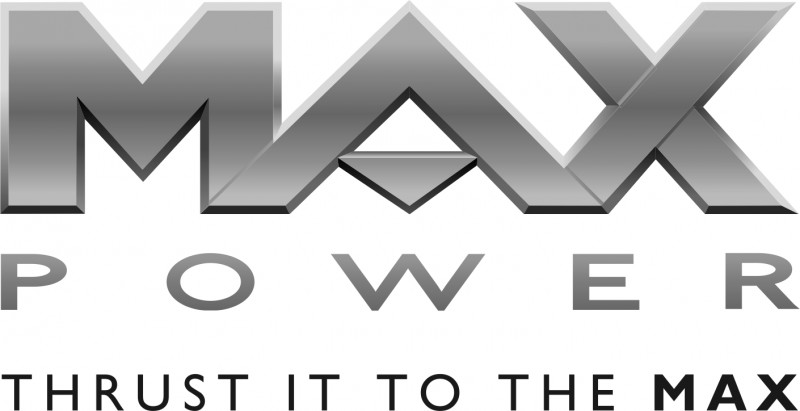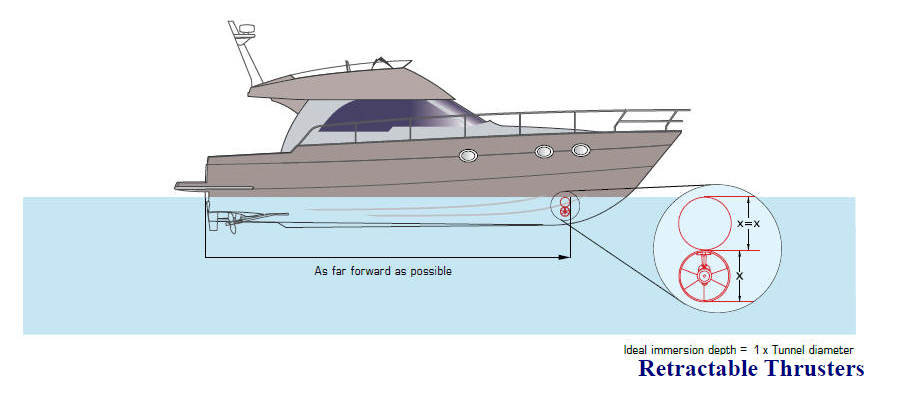
|
| Index | Cart | Contact | Return Policy | Spare Parts |
| Español |
Installation Manuals |
Positioning thrusters is often as important as choosing the right thrust output when seeking a suitable thruster for your yacht. The thruster’s turbine needs to be placed one full propeller diameter under the water line to achieve optimal thrust. The thruster must also be positioned as far forward in the bow or as far back in the Retractable thrusters are easily installed far forward in the bow whilst still achieving the required immersion depths. This results in a thruster that has a good turning effect on the yacht, often allowing a unit with a lower thrust rating than its tunnel equivalent to be used with excellent results. stern as possible. A thruster stepped back from the bow (or stern) would need to be more powerful than one mounted further forward (or aft), to achieve the same turning effect on the yacht. With this in mind, tunnel thrusters offer an ideal solution for motor yachts and even deep-footed sailing yachts when sailing performance is not paramount.

Retractable thrusters are easily installed far forward in the bow whilst still achieving the required immersion depths. This results in a thruster that has a good turning effect on the yacht, often allowing a unit with a lower thrust rating than its tunnel equivalent to be used with excellent results. stern as possible. A thruster stepped back from the bow (or stern) would need to be more powerful than one mounted further forward (or aft), to achieve the same turning effect on the yacht. With this in mind, tunnel thrusters offer an ideal solution for motor yachts and even deep-footed sailing yachts when sailing performance is not paramount. When retracted these units have no effect on the yacht’s drag and do not reduce sailing performance in light winds. Most modern sailing yachts are better suited to retractable thrusters.
.png)
The combined use of a bow and stern thruster adds a greater level of control when manoeuvring in difficult conditions or tight corners. Turning on the spot or even stepping the entire yacht sideways becomes possible. Max Power offers stern thruster adapters for the entire tunnelthruster range. A range of Ignition Protected hrusters is also available enabling the use of a stern thruster in habitually damp zones.
.png)
.png)
Bow and stern thrusters whether retractable or tunnel require a power source. On a yacht this can be either a 12/24V DC electric motor or a hydraulic motor. The combined use of a bow and stern thruster adds a greater level of control when manoeuvring in difficult conditions or tight corners. Turning on the spot or even stepping the entire yacht sideways becomes possible. Max Power offers stern thruster adapters for the entire tunnel thruster range. A range of Ignition Protected thrusters is also available enabling the use of a stern thruster in habitually damp zones. The hydraulic motor will need to draw power from a thermal engine (via a hydraulic pump) or a remote mounted DC motor (also via a hydraulic pump). The DC motor will draw power directly from a battery bank as do direct electric thrusters.
.png)
